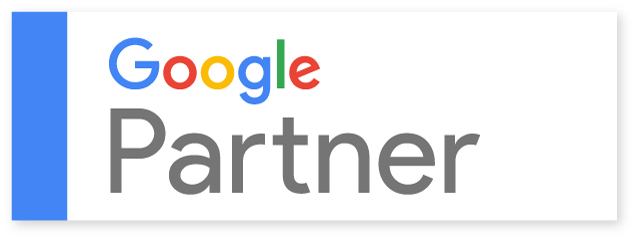Nofollow Link Concept
What is a nofollow link?
A nofollow link is one that achieves the opposite of what is desired when linked from an authoritative website. It is a normal link, but with an added attribute that indicates to Google that, despite being linked, it should not transmit any authority to them, leaving the positioning of the destination website practically the same as it was before being linked.
It may sound counterproductive and harmful, but the truth is that many webmasters resort to this type of link to avoid problems with Google and other search engines. They are a concept that was born with the aim of avoiding the massification of links more than a decade ago, when positioning was taking its first steps and websites were filled with links in order to provide better SEO to the destination pages.
Today they continue to be used and, in fact, websites with a certain authority resort to them when they link to competitors so that this important authority is not transmitted in order to climb positions in the SERPs that search engines build.
Now that we have introduced the concept, we will delve a little deeper into it by explaining its usefulness and expanding the information so that you can become more familiar with the nofollow link. It can be very useful in your career to better position an online portal if you know how to use it.
What is a nofollow link for?
The nofollow link serves to not transmit any authority to the website that is linked. This transmission provides you with a small boost in positioning, commonly known as link juice due to a mechanism by which the strength of a website with high authority is transmitted to the linked one.
Its purpose does not go beyond SEO, and this is where it acquires a fairly important meaning. If a portal that enjoys a relevant position does not want the competition to climb in places thanks to it, but needs to link to it to have interesting information, it can resort to nofollow to win in both senses, both in terms of content and positioning.
EXCELENTETrustindex verifica que la fuente original de la reseña sea Google. Trabajar con Daimatics ha sido una experiencia realmente positiva. Desde el primer momento, se tomaron el tiempo para entender todas las necesidades del negocio. Nos ayudaron con una estrategia 360 que realmente mejoró el tráfico y atrajo clientes. Lo que más me gustó es lo claros y cercanos que son. Nos mantenían al tanto de todo, explicando los resultados y ajustando la estrategia cuando era necesario. Además, siempre están disponibles para cualquier pregunta, lo que nos dio mucha tranquilidad. Estamos muy contentos con los resultados que nos brindo la agencia. Si buscas un equipo comprometido y resultados reales, los recomiendo totalmente.Trustindex verifica que la fuente original de la reseña sea Google. Daimatics es una agencia super profesional en donde desde el primer contacto muestra un alto nivel de profesionalismo y conocimiento logrando entender el mercado, diseñando un plan 360 para superar los objetivos del negocio. El equipo tiene un manejo increible en cada area en la que se destacan como redes, diseño web, SEO, Paid media y más. Si quieres conseguir buenos resultados y sobre todo reales, daimatics es tu agencia.Trustindex verifica que la fuente original de la reseña sea Google. Molt bon professional, serio, formal, coherent i cumplidor.Trustindex verifica que la fuente original de la reseña sea Google. Molt bon assessorament i reponen els dubtes enseguida. Tracte molt agradable i professional.Trustindex verifica que la fuente original de la reseña sea Google. Siempre que los he necesitado me han dado un excelente servicio. David, CEO de DAIMTICS, siempre te explica todo con claridad y sin tecnicismos. Seguid trabajando así, lo hacéis genial!Trustindex verifica que la fuente original de la reseña sea Google. Mi experiencia no puede haber sido mejor, me ha sido de gran ayuda a la hora de asesoramiento respecto a problemas surgidos con una empresa que me estaban confeccionando la web y que no tenían de idea. El feedback con Daima ha sido inmejorable y me han creado campañas publicitarias con grandes resultados. 100% recomendable y más teniendo en cuenta que detrás de la web, hay un mundo totalmente desconocido y al vez el más importante cómo es el SEO y es aquí donde te pueden engañar.Verificado por: TrustindexLa insignia verificada de Trustindex es el símbolo universal de confianza. Solo las mejores empresas pueden obtener la insignia verificada si tienen una puntuación de revisión superior a 4.5, basada en las reseñas de clientes de los últimos 12 meses. Leer más
- contact
- shall we talk
- contact
- shall we talk
- contact
- shall we talk
- contact
- shall we talk
- contact
- shall we talk
- contact
- shall we talk
Do you want to boost your business? Get in touch with our team
Book a meeting
Notes on Data Protection
- When sending a form, data such as your email and name are requested which are stored in a cookie so that you do not have to complete them again in future submissions.
- By submitting a form you must accept our privacy policy. Responsible for the data: Daima TIC Solucions SL
- Purpose: Respond to form requests.
- Legitimation: Your express consent.
- Recipient: Daima TIC Solucions SL (data stored only in email client).
- Rights: You have the right to access, rectification, deletion, limitation, portability and oblivion of your data.
- We do not share your data with third parties, and in our privacy policy you will find additional information on how we treat them, and how to exercise your rights of access, rectification and deletion, among others



